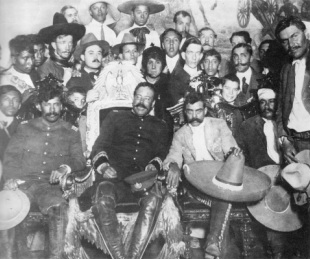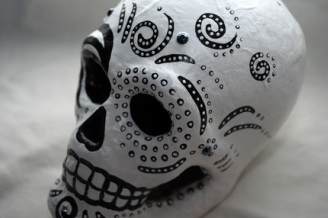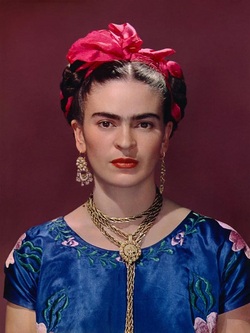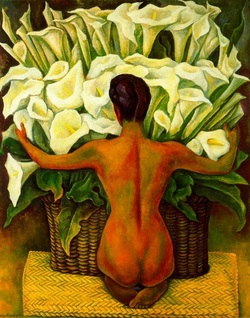|
This is your new blog post. Click here and start typing, or drag in elements from the top bar.  The Mexican Revolution was brought on by, among other factors, tremendous disagreement among the Mexican people over the dictatorship of President Porfirio Díaz, who, all told, stayed in office for thirty one years. During that span, power was concentrated in the hands of a select few; the people had no power to express their opinions or select their public officials. Wealth was likewise concentrated in the hands of the few, and injustice was everywhere, in the cities and the countryside alike. Early in the 20th Century, a new generation of young leaders arose who wanted to participate in the political life of their country, but they were denied the opportunity by the officials who were already entrenched in power and who were not about to give it up. This group of young leaders believed that they could assume their proper role in Mexican politics once President Díaz announced publicly that Mexico was ready for democracy. Although the Mexican Constitution called for public election and other institutions of democracy, Díaz and his supporters used their political and economic resources to stay in power indefinitely. Francisco I. Madero was one of the strongest believers that President Díaz should renounce his power and not seek re-election. Together with other young reformers, Madero created the ''Anti-reeleccionista'' Party, which he represented in subsequent presidential elections. Between elections, Madero travelled throughout the country, campaigning for his ideas. To learn more go to: http://www.mexconnect.com/articles/2824-the-mexican-revolution-1910
0 Comments
 More than 500 years ago, when the Spanish Conquistadors landed in what is now Mexico, they encountered natives practicing a ritual that seemed to mock death. It was a ritual the indigenous people had been practicing at least 3,000 years. A ritual the Spaniards would try unsuccessfully to eradicate. A ritual known today as Día de los Muertos, or Day of the Dead. The ritual is celebrated in Mexico and certain parts of the United States, including the Valley. Celebrations are held each year in Mesa, Chandler, Guadalupe and at Arizona State University. Although the ritual has since been merged with Catholic theology, it still maintains the basic principles of the Aztec ritual, such as the use of skulls. Today, people don wooden skull masks called calacas and dance in honor of their deceased relatives. The wooden skulls are also placed on altars that are dedicated to the dead. Sugar skulls, made with the names of the dead person on the forehead, are eaten by a relative or friend, according to Mary J. Adrade, who has written three books on the ritual. The Aztecs and other Meso-American civilizations kept skulls as trophies and displayed them during the ritual. The skulls were used to symbolize death and rebirth. The skulls were used to honor the dead, whom the Aztecs and other Meso-American civilizations believed came back to visit during the monthlong ritual. Unlike the Spaniards, who viewed death as the end of life, the natives viewed it as the continuation of life. Instead of fearing death, they embraced it. To them, life was a dream and only in death did they become truly awake. "The pre-Hispanic people honored duality as being dynamic," said Christina Gonzalez, senior lecturer on Hispanic issues at Arizona State University. "They didn't separate death from pain, wealth from poverty like they did in Western cultures." However, the Spaniards considered the ritual to be sacrilegious. They perceived the indigenous people to be barbaric and pagan. In their attempts to convert them to Catholicism, the Spaniards tried to kill the ritual. But like the old Aztec spirits, the ritual refused to die. To continue reading go to: http://www.azcentral.com/ent/dead/articles/dead-history.html  Frida Kahlo de Rivera (July 6, 1907 – July 13, 1954; Magdalena Carmen Frieda Kahlo y Calderón) was a Mexican painter, born in Coyoacán. Perhaps best known for her self-portraits, Kahlo's work is remembered for its "pain and passion", and its intense, vibrant colors. Her work has been celebrated in Mexico as emblematic of national and indigenous tradition, and by feminists for its uncompromising depiction of the female experience and form. Mexican culture and Amerindian cultural tradition figure prominently in her work, which has sometimes been characterized as Naïve art or folk art. Her work has also been described as "surrealist", and in 1938 one surrealist described Kahlo herself as a "ribbon around a bomb". Kahlo suffered lifelong health problems, many of which stemmed from a traffic accident in her teenage years. These issues are reflected in her works, more than half of which are self-portraits of one sort or another. Kahlo suggested, "I paint myself because I am so often alone and because I am the subject I know best." She also stated, "I was born a bitch. I was born a painter To read more go to: http://www.fridakahlo.com/ This is your new blog post. Click here and start typing, or drag in elements from the top bar.
 If any man can be said to have changed the course of a nation's art single handed, it is Diego Rivera. He was born in 1886 in the Mexican silver mining town of Guanajuato. His father, a freemason with a 'liberal' background, was a teacher at the time of Diego's birth and later became a school inspector. Rivera was the elder of twin boys, but his brother died at the age of two. His family left his birthplace when he was six, driven out partly by the failure of certain mining speculations and partly by the unpopularity generated by his father's liberalism.Rivera soon showed himself to be a precociously gifted artist and began to study in the evenings at the Academy of San Carlos at the age of ten. At sixteen Rivera joined a student strike at the Academy and was expelled. In due course he was officially reinstated, but never returned, instead working independently for the next five years. Realizing that his son was getting nowhere in his chosen profession, Rivera senior helped Diego win a scholarship, awarded by the Governor of the Province of Veracruz, to study abroad. The young artist arrived in Spain in January 1907. Rivera made Spain his base for an extended tour which took in France, Belgium, Holland and England. He was in France in 1909, where he encountered the work of the Fauves and Cezanne, but he was later to claim that the artist who impressed him most was Henri Rousseau, 'Le Douanier' 'the only one of the moderns whose works stirred each and every fibre of my being.' To continue reading go to: http://www.artchive.com/artchive/R/rivera.html |
Archives |
